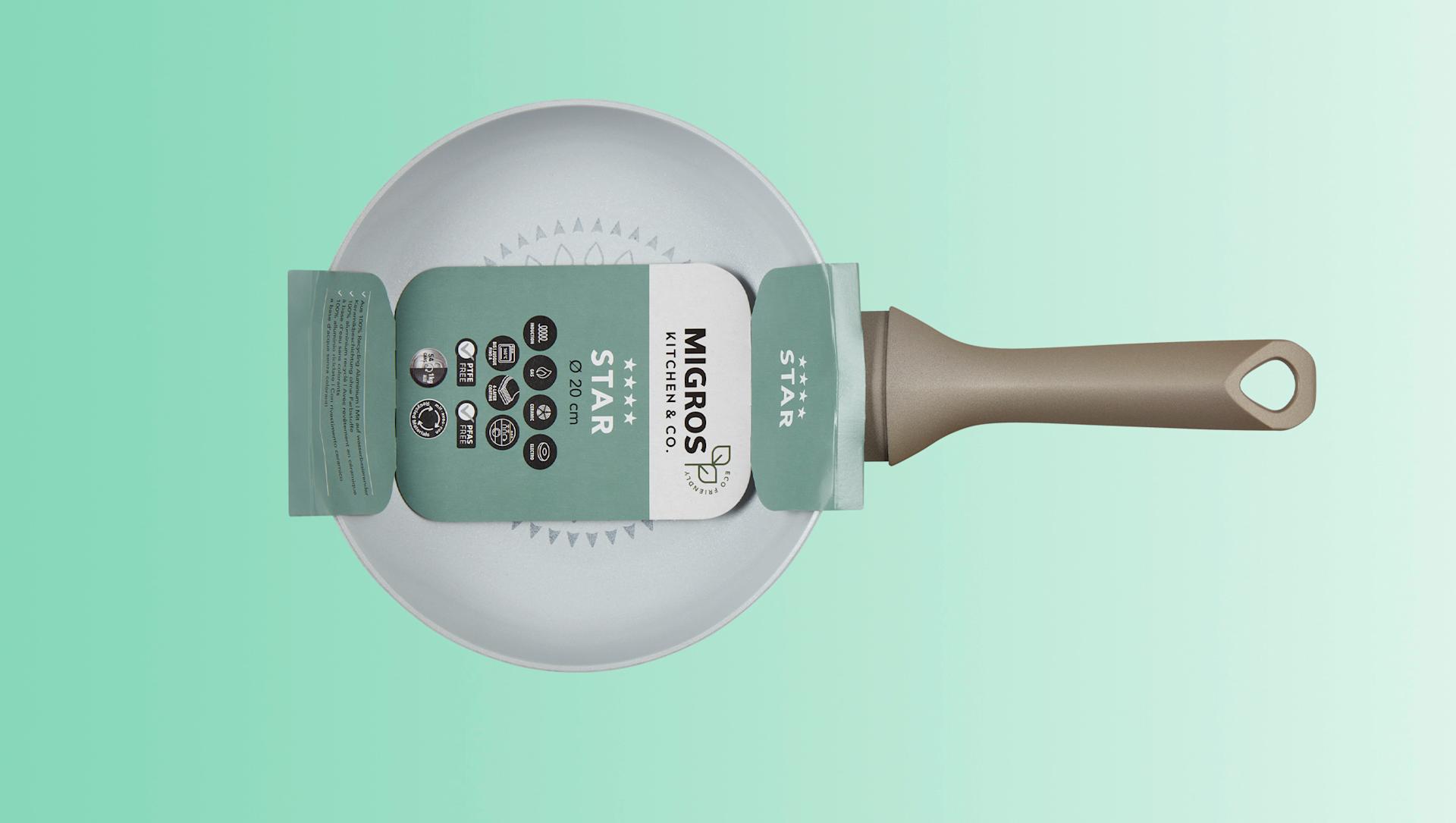
Migros Pioneer Fund
Rechargeable lithium batteries that last longer
With the support of the Migros Pioneer Fund, Evolium Technologies is extending the life of lithium batteries.
navigation

Circular economy
How environmentally friendly are a product's materials and to what extent can they be recycled? Two new M-Check categories provide this information for the Migros household range. For example, for pans.
There are all sorts of pans, from saucepans and frying pans to stewing pots. The materials used to make them are just as varied, ranging from iron, aluminium, cast iron and copper to stainless steel. The handles are often made of yet another material, such as wood or plastic. Not to mention their screws and any coatings.
The body of the pan and the coating. The body is mainly made of metal; a natural, non-renewable raw material extracted from the earth. Mining may involve deforestation, which robs animals and plants of their natural habitat. Aluminium, for example, is extracted from an ore called bauxite. Producing it consumes a great deal of energy.
With regard to the coating, many frying pans have a non-stick coating that prevents food burning and thus means that less fat is required. Coatings that use PTFE plastic, more commonly known under the brand name Teflon, are extremely effective. However, their big disadvantage is that this plastic is neither recyclable nor does it decompose naturally. “If you want to be environmentally conscious, choose a pan without a coating - which, incidentally, is exactly what most professional chefs do. If you absolutely have to have a non-stick surface, ceramic coatings are a more environmentally friendly alternative to Teflon,” says Damian Oettli, the Head of Markets at WWF.
Recyclability: the more the individual components of a pan can be recycled, the more sustainable it is. After all, this means that the materials will potentially remain in circulation, thus saving on raw materials, energy and emissions. Star pans (see box) fulfil this requirement in every way, partly because they are made entirely of recycled aluminium. Damian Oettli of WWF says: “A pan that is already largely made of recycled material is the best choice in terms of sustainability. Recycling aluminium, for example, requires only 5% of the energy it would take to make a product from brand-new raw materials.”
Free of harmful substances. If you want to recycle a product, it mustn't contain any problematic materials which would likewise be recycled. To improve the M-Check rating of the Star series of frying pans, the chemical structure of their ceramic coating was modified. This now enables them to be recycled without adversely affecting the quality of the raw material.
Dispose of them correctly. In Switzerland, disposal is organised at the municipal level. Pans made of stainless steel, aluminium or iron can be disposed of at recycling collection points for small metal items. Larger pans must be taken to recycling centres, irrespective of whether they or not they have a non-stick coating. Where possible, remove plastic handles beforehand and dispose of them with normal household rubbish. Glass lids don't belong in waste glass recycling bins, but must be handed in at a recycling centre.
At present, very few non-stick pans are recyclable. “Collected scrap metal is melted down indiscriminately, thereby creating a low-grade material. In addition, the return rate is low because returning items to collection points often doesn't fit into many people’s daily routines. There is thus a serious need for action here,” says Oettli.
Tip: repair products instead of throwing them away. The Swiss start-up Repan repairs Teflon-coated pans, cleans burnt stainless-steel pans and rivets loose handles.
Proper care has a direct impact on the longevity of your cookware. Use wooden or plastic utensils to avoid scratching the coating. This is also why you should never cut foods directly in a pan using a knife.
Coated cast iron pans and stewing pots shouldn't be put in the dishwasher. That's because concentrated detergents and long washing cycles attack the materials and cause non-stick coatings to become less efficient more quickly. Instead, use a soft sponge or cloth to gently clean your pans without scratching the coating – preferably without using washing-up liquid. Tip: put fat-dissolving detergent on a brush, brush it over your pan and leave it to soak for a short time. Then rinse with water.
If you have an uncoated or cast iron pan, salt mixed with a little cooking oil will also help. Let the pan slowly heat up. Once the salt has turned yellowish-brown, rinse the pan with water.
Encrusted food can be removed by sprinkling some dishwasher powder over the food and adding a little water until it forms a kind of paste. Now you must be patient: the longer you allow the mixture to work, the easier you can remove any encrusted food.
Do you know what can go in the bin? With our tips and tricks, recycling not only becomes easy, you also save a lot of waste.